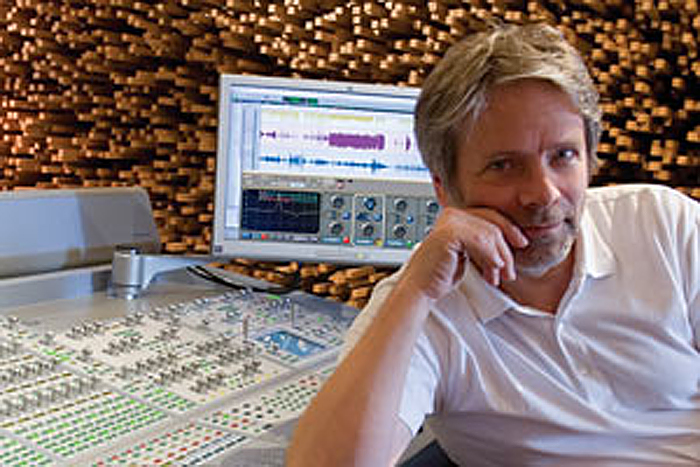Disruptive Innovation to Sustaining Innovation/Sustaining Technology with George Massenburg
TORONTO AES PRESENTS
Disruptive Innovation to Sustaining Innovation/Sustaining Technology
An evening with George Massenburg
Tuesday, 25 September 2012
7:00 PM
Noble Street Studios
17 Noble Street
Toronto, ON
(Queen Street W and Dufferin St)
www.noblestreetstudios.com
Parking is scarce in this area, so plan for time to locate, or use the TTC.
Pre-Meeting “Dutch Treat” dinner 5:00 pm at the Bacchus Roti,
1376 Queen Street West, Toronto
“Bacchus is a gem in Parkdale. The food is delicious and it’s a comfortable atmosphere.”
This month’s meeting will be NOT be available live on-line.
This meeting is generously sponsored by HHB Canada.
George Massenburg will discuss his views on how the transformation from “Disruptive Innovation” to “Sustaining Innovation/Sustaining Technology” opens up opportunities for musicians and music producers to find an audience for higher quality recorded music.
Wikipedia: A disruptive innovation is an innovation that helps create a new market and value network, and eventually goes on to disrupt an existing market and value network (over a few years or decades), displacing an earlier technology. The term is used in business and technology literature to describe innovations that improve a product or service in ways that the market does not expect, typically first by designing for a different set of consumers in the new market and later by lowering prices in the existing market.
In contrast to disruptive innovation, a sustaining innovation does not create new markets or value networks but rather only evolves existing ones with better value, allowing the firms within to compete against each other’s sustaining improvements. Sustaining innovations may be either “discontinuous”[1] (i.e. “transformational” or “revolutionary”) or “continuous” (i.e. “evolutionary”).
Biography
George Y. Massenburg was born in Baltimore, Maryland and raised between there and Macon, Georgia. Keenly interested in music, electronics and sound recording at an early age, he was working part-time both in the recording studio and in an electronics laboratory at 15 years of age. As a sophomore majoring in electrical engineering at Johns Hopkins University, he left and never returned. He designed, authored and presented the 1972 AES paper on the Parametric Equalizer and is regularly published in professional journals and trade magazines worldwide. He was chief engineer of Europa Sonar Studios in Paris, France in 1973 and 1974, and also did freelance engineering and equipment design in Europe during those years.
He chartered an electronics company, GML, Inc., in 1982 to produce equipment as needed for specific recording applications. Some early ideas’ time had come – notably that of ‘Parametric Equalization’ but also seminal features of third and fourth generation automation systems for recording studios. More recently introduced devices, such as the GML 2032 Mic Pre and Parametric EQ, have been in development, on and off, for 20 years. Currently the company manufacturers this world-renowned Parametric EQ, GML Dynamic Range Controller (with true-RMS detectors, remarkably accurate log converters and fast peak detectors) and the GML Microphone Preamplifier. GML also consults and provides independent design for several major audio electronics manufacturers.
Individually or collaboratively, he has participated in over two hundred record albums during the past 40 years. He has designed, built and managed several recording studios, notably “ITI” Studios in Huntsville, Maryland and “The Complex” in Los Angeles. He has in addition, contributed acoustical and architectural designs to many others, including “Skywalker Sound” and “The Site” in Marin County.
He is currently Adjunct Professor of Recording Arts and Sciences at McGill University in Montreal, Quebec, Canada and visiting lecturer at UCLA and USC in Los Angeles, California, Berklee College of Music in Boston Massachusetts and MTSU in Murfreesboro Tennessee.
He has been working to qualify extended resolution and bandwidth as a goal of modern professional digital recording standards work, and has worked unceasingly to improve analog-digital-analog analysis and conversion methods. He and GML, Inc. are currently researching extended automated work-surfaces, high resolution graphical interfaces, extensible network automation for audio production environments, and automation data interchange standards.
George Massenburg’s engineering and producing credits include Billy Joel, Kenny Loggins, Journey, Madeleine Peyroux, James Taylor, Randy Newman, Lyle Lovett, Aaron Neville, Little Feat, Michael Ruff, Toto, The Dixie Chicks, Mary Chapin Carpenter, and Linda Ronstadt, among others. He has been nominated many times for the non-classical engineering Grammy (including a nomination in 2001 for the Mary Chapin Carpenter’s “Time*Sex*Love”), for Record Of The Year in several years, and has won Grammys as producer for Linda Ronstadt’s 1996 “Dedicated To The One I Love” and another for Best Engineered Non-Classical Record in 1990, for Linda Ronstadt’s, “Cry Like A Rainstorm, Howl Like the Wind.” In 1998 he received the Grammy for Technical Achievement, one of only four such awards presented in the history of NARAS. He also won the Academy of Country Music award for Record Of The Year in 1988 (for “The Trio”). In 1989, he received the Mix Magazine TEC Awards for Producer and Engineer Of The Year (for Little Feat), as well as Engineer Of The Year Award (for Linda Ronstadt) in 1991, and 1992 (for Lyle Lovett).
Additional Link: George Massenburg.

